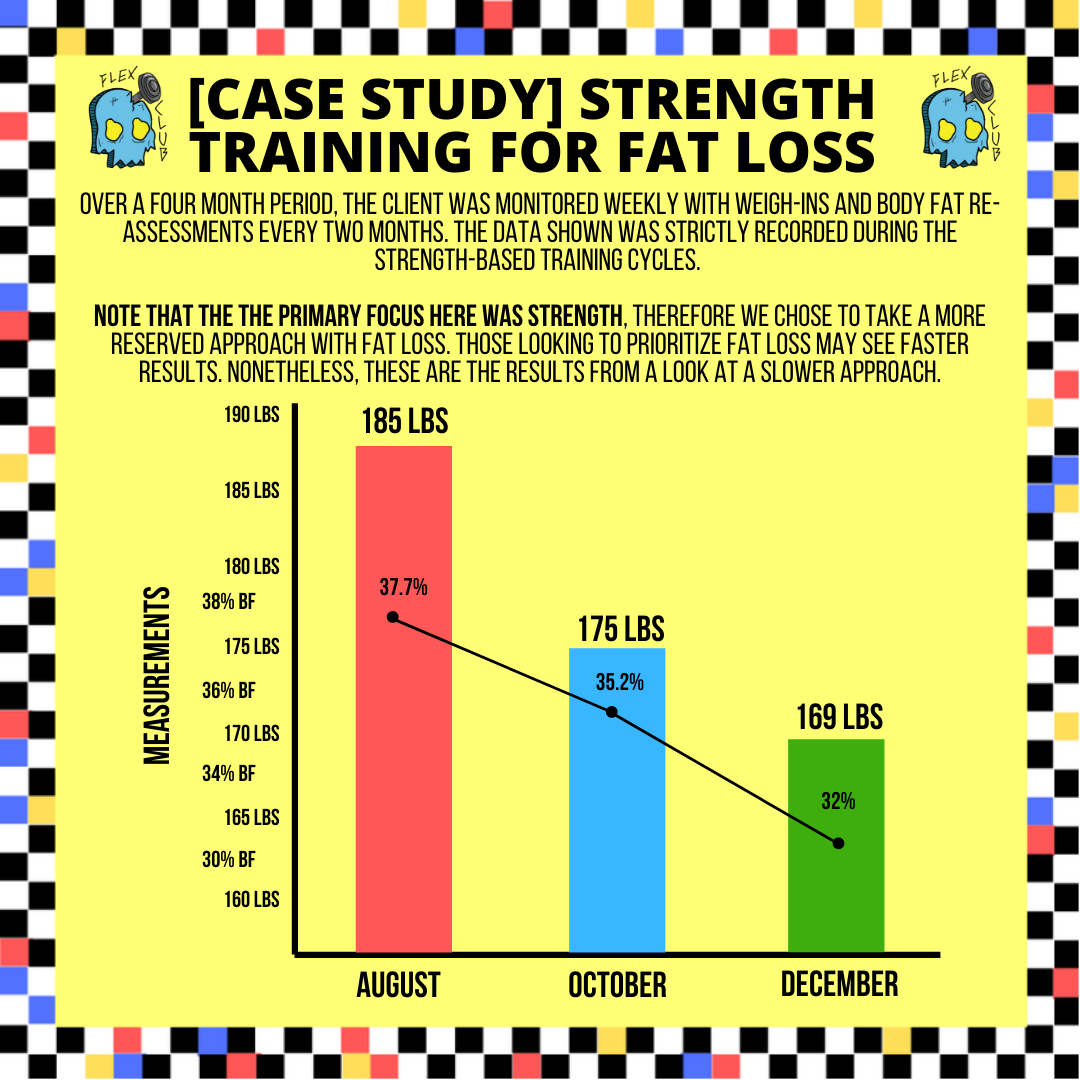Why Strength Training HELPS WITH Fat Loss
When it comes to lifting weights, most people associate it with getting “bulkier,” rather than getting “smaller” or helping with weight loss.
The truth is, lifting weights can and does help you to lose fat. Even more so, it can be a perfect solution if you’ve struggled with your weight loss journey in the past.
In today’s blog post we’re going to dive into why strength training helps with fat loss (and thus, why more people are implementing it on their healthy weight loss journey).
HOW Fat Loss WORKS
In order to better understand why strength training works as a method for fat loss, it’s important to understand how fat loss works.
The only way you can ever achieve fat loss is through a caloric deficit. You can lose weight through other methods (IE: athletes going on a water cut for lower competition weigh-ins), but this does not mean that you have lost fat.
Not all weight loss means that you’re losing fat. And not all fat loss will result in weight loss.
If your goal is to lose healthy weight, then this is going to entail losing fat via a caloric deficit. A caloric deficit can be achieved through one or all of the following common methods:
Following a diet
Lifting in the gym
Cardio
Any of these methods is capable of getting you into a caloric deficit. That said, some methods can be more effective than others depending on the individual.
Which fat loss Methods are Right for You?
For most individuals, the best method for fat loss will entail a combination of all three; a balanced diet, resistance training, and cardio. This will also luckily benefit your basic health needs which are:
Resistance training a minimum of 2x/ week, targeting all of the main muscle groups
75 mins of vigorous aerobic activities, or 150 minutes of moderate aerobic cardio per week
That said, when you’re starting your weight loss journey, you can choose which methods that you lean into to create a larger caloric deficit in your day-to-day.
Strength training can be an impactful way for many people to work towards fat loss, without it feeling like a chore. Ultimately, it can become a hobby that keeps your muscles, joints, and body fat percentage levels within healthy ranges.
If you happen to struggle around limiting your nutrition and you hate cardio, then strength training may be something you really lean into on this journey.
Extra Benefits of Strength Training for Fat loss
Some say that strength training has some extra “special powers” over cardio for fat loss. While aerobic training can speed up your metabolism (calorie burn) for up to 24 hours; strength training does the same, but for longer.
As you begin to build healthier and stronger muscles over time, you will also increase your caloric maintenance (BMR), allowing you the ability to eat more over time.
In recent studies, strength training has been shown to assist more people in achieving a caloric deficit (thus, losing fat more easily) due to its ability to increase metabolic rates for longer periods of time in comparison to steady state cardio (such as jogging for 30-40 minutes). More people have reported that they remain satiated and hunger cues feel more “in control” than in comparison to incorporating a heavier amount of cardio in their programs.
Because of this, strength training helps to keep clients in a caloric deficit, not only through heightened metabolic rates for the following 24 hours, but also due to having more control over their appetite after a heavy or more intense session. But ultimately the real tea is that all three (diet, lifting, and cardio) all have their role on this journey and the one that is best for you is going to be the one that you can sustain.
HOW TO Stop Associating lifting with being “bulky”
If you don’t want to put on a ton of muscle, you don’t have to lift heavy — and you can instead train for muscular endurance, which allows you to build muscle but with higher rep ranges and lighter weight. This won’t make your muscles large, as with hypertrophy and strength phases of training.
You also won’t put on muscle quickly (unfortunately to those who want to), so you will not accidentally get jacked.
also don’t have to necessarily focus as intensely on progressive overload. You can work with lighter weights and reps, but at the end of the day, sustaining some muscle mass is healthy and one of the best ways you can sustain muscle mass is by lifting. You can hit two birds with one stone, just the way you can target heart health with cardio (but also target fat loss). They are two different fitness tools which can help us prioritize different aspects of our health, but both can help us to achieve fat loss results.
Over time, you will start to learn through practice and through consistent results that strength training can and does help with fat loss. Remind yourself of the logic around why you are strength training and allow yourself to trust the process. You can also do further research and look up more examples of individuals who have lost fat!
HOW TO know whether you’re losing fat or muscle
Measuring body fat levels, alongside just weighing in on the scale. You will also use these same methods if you find that your weight is holding steady. You may be building muscle and losing fat, creating a fluctuation around the same weight on the scale, but in reality you may be steadily losing fat while also steadily building muscle. You will still get smaller, not “bulkier” if this is the case.
A powerlifting client’s weight loss experience
Over a four month period, Hannah Ivester (Flex Club powerlifting client) lost over 15 pounds through heavy lifting and following a slight caloric deficit on macros, with the ultimate goal of getting down to 165 pounds.
August 2019: 185 lbs @ 37.7% body fat
October 2019: 175 lbs @ 35.2% body fat
December 2019: 169 lbs @ 32% body fat
She was monitored with weekly weigh-ins, and body fat re-assessments every two months. There was little to no cardio incorporated throughout the entirety of those four months.
Note that the primary focus was maximal strength for powerlifting, therefore we chose to take a more reserved approach with fat loss to maintain strength and muscle.
This is an example from Flex Club powerlifting client, Hannah Ivester.
Summary
Strength training is an effective tool for fat loss— hopefully you now better understand how strength training can be impactful for fat loss (and for overall health).


